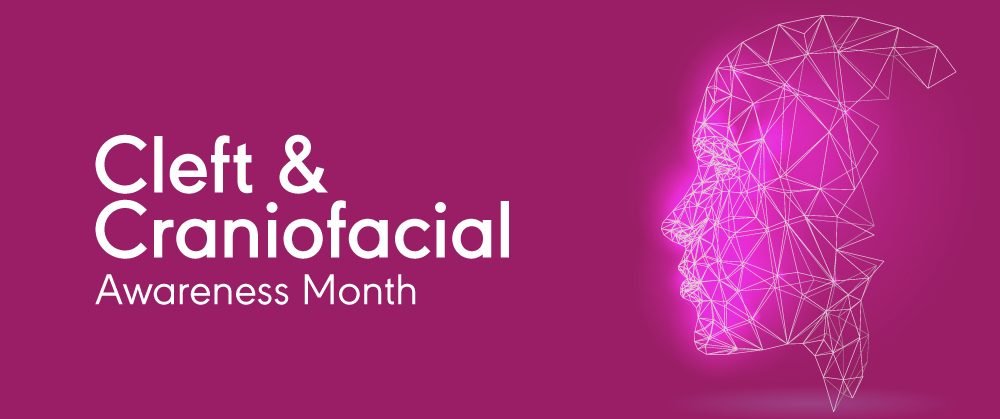Cleft lip and palate are the most common birth defects in the United States, affecting one in 600 newborns. Children born with a cleft lip or palate can have issues with feeding and speech, and the speech-language pathologist (SLP) is an important member of the treatment team.
This month, during National Cleft and Craniofacial Awareness Month, we’re reviewing some of the latest articles on cleft lip, cleft palate, and craniofacial anomalies in the ASHA journals. These articles provide researchers and clinicians with the latest resources they can use to help this population.
Effectiveness of Speech-Language Therapy for Cleft Lip and Palate
On the Benefits of Speech-Language Therapy for Individuals Born With Cleft Palate: A Systematic Review and Meta-Analysis of Individual Participant Data: Even after reconstructive surgery, about 50% of children born with cleft lip and palate present with speech deviations and receive speech-language therapy. This open access article reviews existing resources and summarizes the benefits of speech-language pathology services for these children.
Speech-Language Pathology Provision During the COVID-19 Pandemic for Children Born With Cleft Palate in the United Kingdom—Parent/Caregiver Perspectives and Experiences: During the first national lockdown due to the prevalence of COVID-19 in the United Kingdom, traditional speech-language pathology services for children with cleft palate were delayed or changed. In this article, the authors reviewed parent and caregiver perspectives about delays and changes in speech-language pathology services caused by the lockdown—as well as their perspectives on the effectiveness of online service provision.
The Latest on Cleft and Craniofacial Disorders
One Size Doesn’t Fit All: A Pilot Study Toward Performance-Specific Speech Intervention in Children With a Cleft (Lip and) Palate: Although SLPs usually apply a “one size fits all” approach to eliminate compensatory cleft speech characteristics, approaches fall into two distinct categories. Researchers used different therapy interventions based on the cleft speech characteristics of each child, finding a correlation that may help tailor future treatment plans based on speech characteristics.
English-Only Treatment of Compensatory Speech Errors in a Bilingual Adoptee With Repaired Cleft Palate: A Descriptive Case Study: This case study has exciting implications for bilingual late-adopted children with speech disorders. The authors found that treatment of English phonemes over a 15-month span also improved production of Mandarin phonemes.
Development and Resolution of Nasal Fricatives in a Child With Repaired Bilateral Cleft Lip and Palate: A Case Report: Children with repaired cleft palate can exhibit audible nasal air escape, with a variety of characters and underlying causes. In this article, researchers described the development, characteristics, and resolution of this articulation error in a patient over a period of more than 4 years.
Detecting Hearing Loss in Infants With a Syndrome or Craniofacial Abnormalities Following the Newborn Hearing Screen: Speech-language pathologists aren’t the only ASHA members who may have children with craniofacial anomalies on their caseload. This study looked at children with a syndrome or craniofacial anomaly who did and did not pass newborn infant hearing screenings, recommending early audiological assessment for children in both groups.
Cleft and Craniofacial Awareness
Due to the commonality of cleft and craniofacial disorders, and the importance of the audiologist and SLP, on the treatment team, there’s a good chance you’ve already helped a patient with a cleft or craniofacial condition. We hope that the new research we’ve highlighted can help you continue to provide evidence-based care to this population.
You can learn more about the role of ASHA members in cleft and craniofacial care on the ASHA Practice Portal. If you’d like even more research and evidence-based practice on cleft and craniofacial conditions, we encourage you to explore ASHA’s Special Interest Group 5. This month, and every month, we hope that you’re able to take some time to learn more about cleft and craniofacial conditions—and help spread the word about how ASHA members can help!







